
Mouscron is a city and municipality of Wallonia located in the Belgian province of Hainaut, along the border with the French city of Tourcoing, which is part of the Lille metropolitan area.

Vresse-sur-Semois is a municipality of Wallonia located in the province of Namur, Belgium.
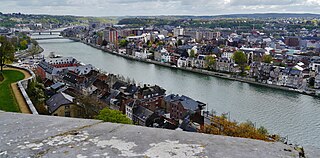
Namur is a city and municipality in Wallonia, Belgium. It is the capital both of the province of Namur and of Wallonia, hosting the Parliament of Wallonia, the Government of Wallonia and its administration.

Aubange is a city and municipality of Wallonia located in the province of Luxembourg, Belgium.

Florenville is a city and municipality of Wallonia located in the province of Luxembourg, Belgium.

Gaume is a region in the extreme southeast of Belgium. At a lower altitude than the Ardennes, it borders the French region of Lorraine to the south, the Land of Arlon to the east, and the Belgian part of the Ardennes to the north.

Champenois is a Romance language among the langues d'oïl spoken by a minority of people in Champagne and Île-de-France provinces in France, as well as in a handful of towns in southern Belgium.

The Semois is a river flowing from the Ardennes uplands of Belgium and France towards the Meuse, of which it is a right tributary.
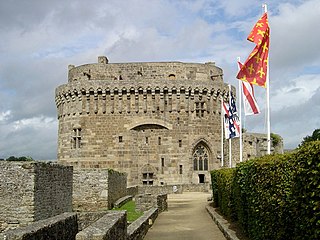
Dinan is a walled Breton town and a commune in the Côtes-d'Armor department in northwestern France. On 1 January 2018, the former commune of Léhon was merged into Dinan.

Georges Stein, born Séverin Louis Stein, was a French Impressionist artist. Stein was a painter and draughtsman, and is known primarily for light-infused views of Paris and London. He also painted scenes from Melun, Vichy, Bern, Geneva, and Monte Carlo.

Claudine Luypaerts, better known as Maurane, was a Francophone Belgian singer and actress.

Geispolsheim is a commune in the Bas-Rhin department in Grand Est in north-eastern France.

Aurélien Cotentin, better known by his stage name Orelsan, is a French rapper, songwriter, record producer, actor and director. He has released four studio albums: his debut Perdu d'avance on 16 February 2009, his second album Le chant des sirènes on 26 September 2011, his third album La fête est finie on 20 October 2017 and his fourth album Civilisation on 19 November 2021.

Laforêt is a village of Wallonia and a district of the municipality of Vresse-sur-Semois, located in the province of Namur, Belgium, and is close to the French border.
Villers-sur-Semois Castle is a castle in Villers-sur-Semois in the municipality of Étalle in the province of Luxembourg, Wallonia, Belgium.
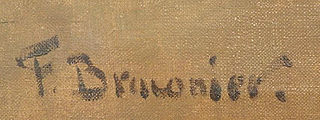
Frédéric François Albert Braconier was a Belgian artist from the Wallonia whose œuvre comprises at least 150 paintings and monotypes of considerable variety both in subject and style. He painted landscapes, city views and portraits and created numerous abstract compositions. Braconier was active for more than sixty years, artistically “reinventing” himself several times. The diversity of his works, bearing witness both to his curiosity and his willingness to change, makes him an interesting artist.

Lacuisine is a village of Wallonia and a district of the municipality of Florenville, located in the province of Luxembourg, Belgium.
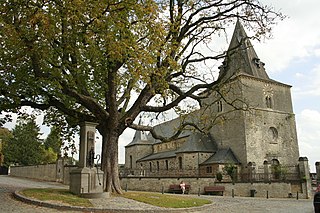
Tourinnes-la-Grosse is a village of Wallonia and a district of the municipality of Beauvechain, located in the province of Walloon Brabant, Belgium. It was a municipality in its own right before the fusion of the Belgian municipalities in 1977.
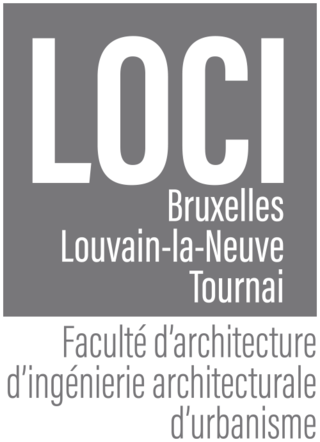
The Faculty of Architecture, Architectural Engineering and Urban Planning, often called LOCI, is the 14th faculty of the University of Louvain, Belgium. It became an independent faculty in 2009, with the merger of three institutes founded between 1867 and 1882, and is active in Brussels (Saint-Gilles), Tournai and Louvain-la-Neuve.

Cugnon is a village of Wallonia and a district of the municipality of Bertrix, located in the province of Luxembourg, Belgium.






















